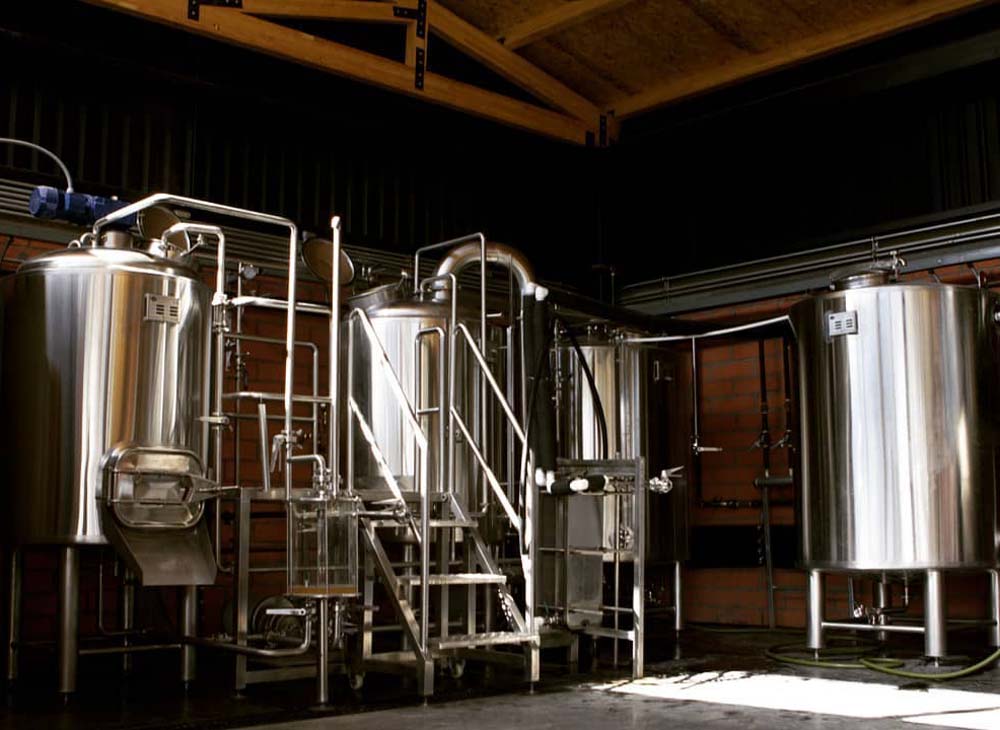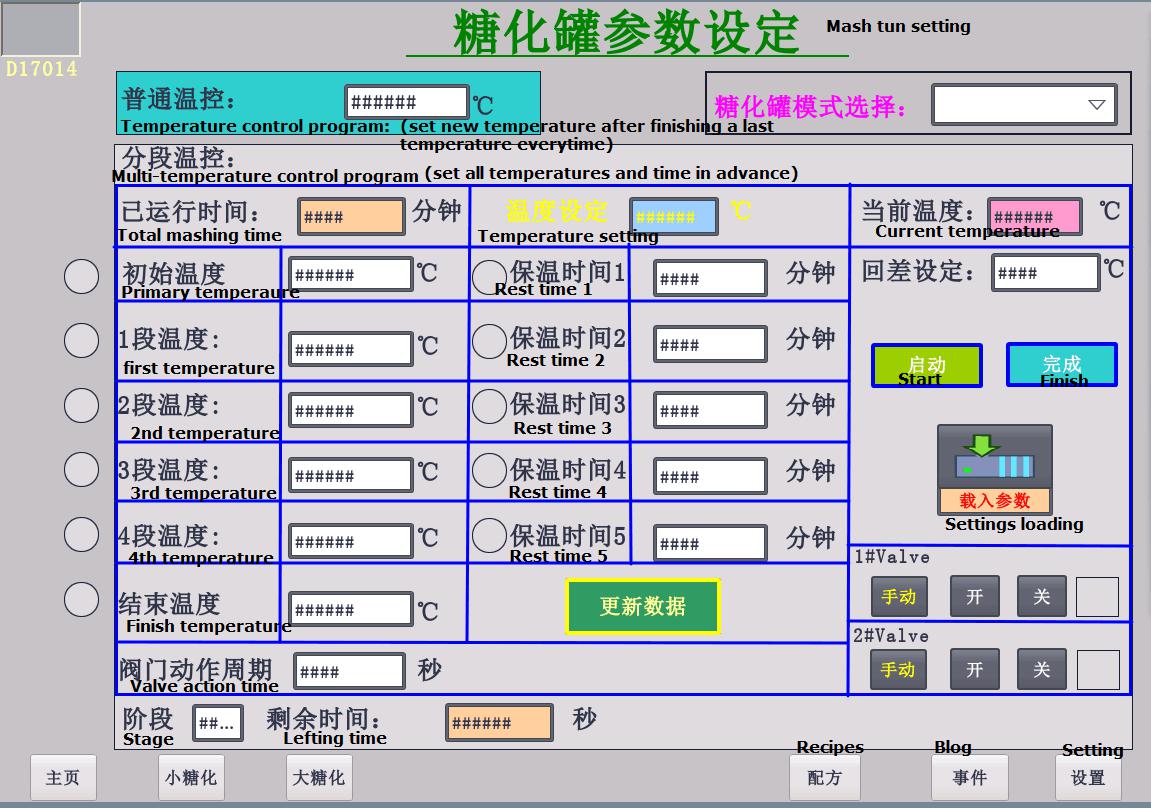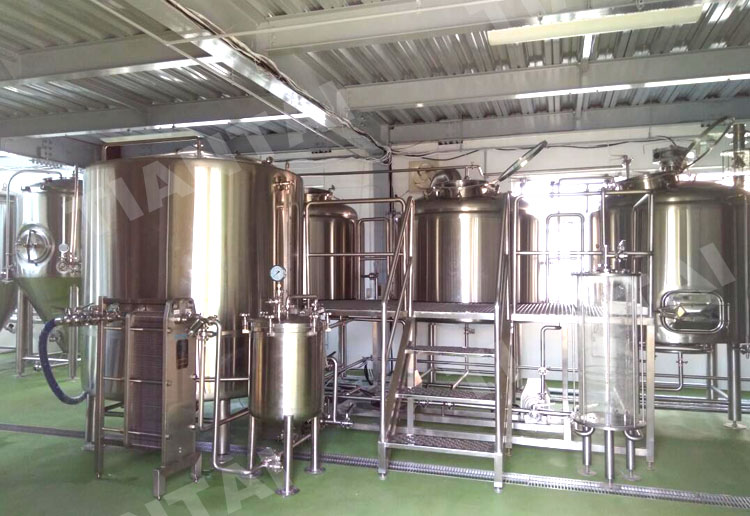Multi Step Mashing vs Single Step Mashing For Beer Brewing?
- Dec 04, 2021
- 64
- tiantai
Multi-step mashes used to be the standard for making beer, but increasingly home brewers and pro brewers have moved to brewing exclusively with a single step mash. The single step mash has many advantages including time, cost savings, simplicity and consistency.

Most newcomers to all grain and partial mash brewing start with a simple single step infusion mash. The process involves heating water to a fixed temperature slightly above your target temperature, and then adding your crushed grains. If calculated properly you will hit a mash temperature usually in the range of 148-156F. At this temperature a combination of alpha and beta amylase will break longer complex sugar chains in barley into simpler sugars that can be easily fermented. By adjusting this conversion temperature we can also affect the body of the beer.
Typically this process takes anywhere from 30 to 90 minutes. A cooler or insulated pot is often used to maintain temperature though on more complex systems such as RIMS and HERMS a recirculation pump and heating element may also help maintain the temperature. At the end of the mash process we run hot water through the grain bed with some kind of filtering mechanism to extract the hot wort we’ll boil to make beer.
Multi-Step Mashing and History
In a multi-step mash, we make multiple stops at different temperatures along the way – typically from lowest temperature to higher until we reach our conversion temperature of 147-156F, at which we convert the sugars and lauter. In the earlier days of beer brewing, multi-step mashes were the standard, but in modern brewing have largely been abandoned.
The historical reason behind multi-step mashes was to develop enzymes to help in the conversion of starches. Before malting and kilning was well understood, most malts were what we would today describe as “undermodified”. They had relatively low enzyme content as a result, and required additional steps to help enhance the enzymes.
Here are some typical steps (also called rests) in a multi-step mash with their formal descriptions:
Phytase (86-126 F) – Lowers the pH of the mash slightly. Lowering the mash pH has a number of benefits, though a Phytase rest is rarely used by modern brewers, as there are alternate ways to control mash pH.
Debranching (95-112 F) – Helps to increase the solubility of starches resulting in increased extraction for certain malts.
Beta Glucanese (95-113F) – Breaks down the gummy heavy starches, which can help improve stability and extraction, particularly for mashes high in proteins and adjuncts such as wheat.
Pepidase (113-131F) – Produces free amino nitrogen, which can aid in fermentation.
Do I Need a Multi-Step Mash?
Assuming you are using a reasonable portion of modern pale malt in your beer, there is little reason for using a multi-step mash in most beers. Modern base malts have very high diastatic power (enzyme content) making the historical rests unnecessary. A single step mash will work in over 95% of the beers most brewers will brew.
The only exceptions I can think of would be where you are working with a high percentage of unmalted ingredients such as uncooked cereals, unmalted wheat or a high percentage of non-traditional brewing grains. In these cases you might want to consider an appropriate rest to cook or gelatanize the cereals, or simply switch to a gelatinized/cooked alternative.
For example, use torrified or flaked wheat or barley instead of raw wheat or barley. Pick cooked “quick” or instant oats instead of the uncooked kind. Pre-cooking, flaking or torrifying these unmalted cereals allows them to be used directly in a single step mash.
One other trick I’ve learned when working with many German styles is to use a small addition of melanoidin malt in the place of a complex decoction or multi-step mash. This addition gives the beer a slightly malty warmth you might get from a decoction mash using a simple single infusion mash.
Vicky Shao
Sales Manager
[email protected]

Most newcomers to all grain and partial mash brewing start with a simple single step infusion mash. The process involves heating water to a fixed temperature slightly above your target temperature, and then adding your crushed grains. If calculated properly you will hit a mash temperature usually in the range of 148-156F. At this temperature a combination of alpha and beta amylase will break longer complex sugar chains in barley into simpler sugars that can be easily fermented. By adjusting this conversion temperature we can also affect the body of the beer.
Typically this process takes anywhere from 30 to 90 minutes. A cooler or insulated pot is often used to maintain temperature though on more complex systems such as RIMS and HERMS a recirculation pump and heating element may also help maintain the temperature. At the end of the mash process we run hot water through the grain bed with some kind of filtering mechanism to extract the hot wort we’ll boil to make beer.
Multi-Step Mashing and History
In a multi-step mash, we make multiple stops at different temperatures along the way – typically from lowest temperature to higher until we reach our conversion temperature of 147-156F, at which we convert the sugars and lauter. In the earlier days of beer brewing, multi-step mashes were the standard, but in modern brewing have largely been abandoned.
The historical reason behind multi-step mashes was to develop enzymes to help in the conversion of starches. Before malting and kilning was well understood, most malts were what we would today describe as “undermodified”. They had relatively low enzyme content as a result, and required additional steps to help enhance the enzymes.
Here are some typical steps (also called rests) in a multi-step mash with their formal descriptions:
Phytase (86-126 F) – Lowers the pH of the mash slightly. Lowering the mash pH has a number of benefits, though a Phytase rest is rarely used by modern brewers, as there are alternate ways to control mash pH.
Debranching (95-112 F) – Helps to increase the solubility of starches resulting in increased extraction for certain malts.
Beta Glucanese (95-113F) – Breaks down the gummy heavy starches, which can help improve stability and extraction, particularly for mashes high in proteins and adjuncts such as wheat.
Pepidase (113-131F) – Produces free amino nitrogen, which can aid in fermentation.
Do I Need a Multi-Step Mash?
Assuming you are using a reasonable portion of modern pale malt in your beer, there is little reason for using a multi-step mash in most beers. Modern base malts have very high diastatic power (enzyme content) making the historical rests unnecessary. A single step mash will work in over 95% of the beers most brewers will brew.
The only exceptions I can think of would be where you are working with a high percentage of unmalted ingredients such as uncooked cereals, unmalted wheat or a high percentage of non-traditional brewing grains. In these cases you might want to consider an appropriate rest to cook or gelatanize the cereals, or simply switch to a gelatinized/cooked alternative.
For example, use torrified or flaked wheat or barley instead of raw wheat or barley. Pick cooked “quick” or instant oats instead of the uncooked kind. Pre-cooking, flaking or torrifying these unmalted cereals allows them to be used directly in a single step mash.
One other trick I’ve learned when working with many German styles is to use a small addition of melanoidin malt in the place of a complex decoction or multi-step mash. This addition gives the beer a slightly malty warmth you might get from a decoction mash using a simple single infusion mash.
Vicky Shao
Sales Manager
[email protected]

.jpg)


